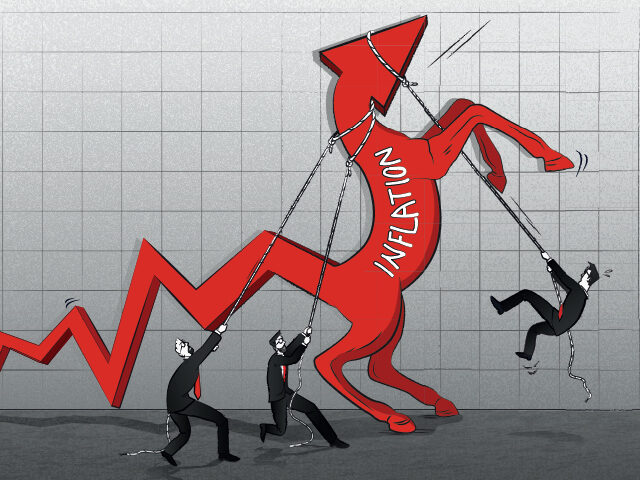Inflation moderated in December, but there are some worrisome signals buried in the most recent consumer price index.
The consumer price index (CPI) declined by one-tenth of a percentage point compared with November, the first significant decline since the initial stages of the pandemic lockdowns in the spring of 2020. Before rounding, the CPI fell by 0.079 percent in December and was down 0.019 in July. This was in line with the consensus estimate for inflation to be flat to down a bit. As a result of the decline, the annual rate of inflation fell to 6.5 percent, the lowest reading since October of 2021.
While this is a welcome respite from the high of nine percent we hit in June and a continuation of the trend down, it is still a very high level of inflation and far above a level consistent with the Federal Reserve’s statutory mandate to achieve price stability. The Federal Reserve explicitly targets a different measure of inflation, the personal expenditure price index produced by the Commerce Department; but Fed chair Jerome Powell has made it clear he keeps his eye on CPI as well. There’s good reason for this: the much better-known CPI may be more influential in setting consumer expectations.
As the chart below makes clear, we are experiencing more inflation than consumers have seen in this century. In fact, you have to go all the way back to 1982 to find a time when prices were up more than six percent on an annual basis. One result of this is that workers will seek higher wages in order to compensate for higher prices. Average hourly earnings were up three percent in December, indicating that workers are clawing back some of what they lost to a year of high inflation. The trouble is that this additional spending power has the potential to push prices even higher, setting off the dreaded wage-price spiral.

To get the obvious question out of the way, this report is likely to give the Fed all the room its needs to slow down the pace of rate hikes. The likelihood is now that the Fed will raise its target by 0.25 percent at the next meeting, which runs from January 31 to February 1. This, however, does not mean that Fed officials will pull back on plans to raise the benchmark federal funds rate above five percent. The destination is likely to remain the same while the trip there takes longer. Another way of looking at this is that the Fed will not stop hiking until later in the year.
As we have in the past, we look to measures of underlying inflation for guidance. The 16 percent trimmed mean inflation barometer produced by the Cleveland Fed actually accelerated on a month-to-month basis, rising 0.4 percent compared with the 0.2 percent rise in November. Median CPI dipped from 0.5 percent to 0.4 percent, which is still an elevated level that indicates there are a lot of inflationary pressures in the economy.
Fed officials are likely to look past the decline in goods prices, especially because this was driven by a 9.4 percent fall in energy prices. Services inflation was extremely hot, rising 0.6 percent month-to-month in December. That is twice the rate in November. Several Fed officials have said they are paying close attention to services inflation ex-housing, which is not an official measure published by the Bureau of Labor Statistics. The BLS does provide services ex-rent of shelter, however, and this was up 0.4 percent. Services excluding medical care were up 0.7 percent.
The current Fed has shown a reluctance to surprise the market with a larger-than-expected hike. After today’s inflation report, prices of fed funds futures are implying a 95 percent chance of a 25-basis point hike. That’s a big jump from yesterday’s 76 percent odds. Last week, the market was giving a 25-basis point hike a 65 percent chance. A month ago, the odds heavily favored another 50-basis point hike, with just a 35 percent chance of a smaller hike. If the Fed does want to push forward with a bigger hike, expect a lot of hawkish talk from officials in the coming week to prepare markets.

COMMENTS
Please let us know if you're having issues with commenting.